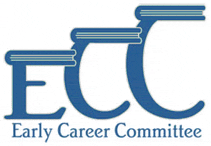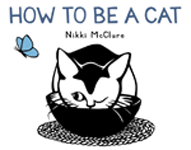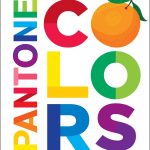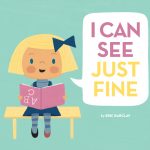After Patrick Ness slayed me with The Chaos Walking trilogy and even more so with A Monster Calls, I needed to get my hands on an ARC of his upcoming YA novel, More Than This, out this September. More Than This features seventeen-year-old Seth, who—in the very first pages of the book—drowns and dies, head smashing against the rocks. But then Seth wakes up in a town that looks a lot like the English village he grew up in. How can Seth be alive? Is this the afterlife, or another life? Why is everything abandoned and covered in dust? Seth has painful memories of the nearby prison only miles away from his childhood home—and it might just have some answers to his questions. Unusual and compelling, Ness has weaved a fascinating, strange tale not just about reality and life, or family and second chances, but the emotions and relationships that make us want to live. He will slay you again. And read it with a friend, because you’ll really want to talk about it afterward!
Monthly Archives: June 2013
Gorgeous
After several days of seeing Paul Rudnick smile confidently out at me from email ads, it was time to pick up his YA novel debut, Gorgeous. The galley cover was a simple, bold type treatment, but the finished jacket (still simple and bold) depicts one of the three magical dresses that changes the life of Becky Randle; the hilarious and amazingly relatable figure at the novel’s center. After her mom dies, Becky calls a mysterious phone number she happens to find in their trailer home. She quickly finds herself whisked away to New York City, where the legendary designer Tom Kelly proposes a once-upon-a-time-like offer: he will make her three dresses that will change her life.
This is literally what happens. When average-looking Becky puts on Tom Kelly’s clothes, she actually becomes a different person—Rebecca Randle, the most beautiful woman ever to live, who quickly wins over Vogue magazine as well as the heir to the British throne. But when she is alone, the person she sees in the mirror is still the average, not-so-beautiful Becky. Through Becky’s sharp eyes and wry voice, Rudnick examines the culture of beauty and celebrity. Appearances aren’t what they seem, the mysterious Tom Kelly isn’t what he seems, and being beautiful may not be enough for Becky to live on for the rest of her life.
On the surface, this is the story of a teenage girl’s dream, but Gorgeous ’is really a first-rate satire. Despite the fantasy elements (simply putting on a dress or three won’t suddenly make a prince fall wildly in love with you, sadly), the premise is just close enough to believable that it really hits home.
Silent Movie
This week I discovered a new-to-me picture book, Silent Movie, which came out just over ten years ago. The story follows a Swedish family who immigrates to New York City in 1909. It’s set up like a silent movie, sparse on text with freeze-frame images which move the story along at a quick pace; on several pages, the illustrations even carry the narrative of their own accord. Not only is the layout reminiscent of film, the plot also takes an appropriate twist: the boy, Gustave, winds up being recruited from the streets to be in a movie himself. It’s no matter that he only speaks Swedish—movies in 1909 are silent, after all. Gustave’s sudden success is inspiring, of course, and there’s also a feel-good family reunion.
In addition to being an interesting slice of history and depiction of the American dream come true, this picture book is an excellent example of how text and images can work together seamlessly and richly. Reading this book translates the experience of watching a silent film remarkably well to the page. It’s also nice to see a different side of Avi, who is likely known better for his novels among today’s readers.
Navah Wolfe, Associate Editor at Simon and Schuster Books for Young Readers
How long have you worked at Simon & Schuster?
I’ve been at Simon & Schuster my whole career!
Officially, I’ve been here for six years. I started as an editorial assistant at Simon & Schuster Books for Young Readers in 2007, but my S&S roots actually go a little farther back — I was an intern at Aladdin in 2005.
What was your first job in children’s publishing? How did you come to editorial?
My first ever publishing internship was at WW Norton, where I worked in the college science textbook department. That’s where I learned that I loved publishing but didn’t love college science textbooks. My second internship was at Aladdin, where I got to work on picture books and middle grade novels. I knew from the moment I started that I wanted to work in children’s editorial, and after a bit of a roundabout path (including spending a year working at the zoo, and some time bookselling at Books of Wonder), I was lucky enough to find a home as an editorial assistant at Simon & Schuster Books for Young Readers.
What was the first manuscript you worked on?
The first manuscript I ever worked on with my boss was My So-Called Family by Courtney Sheinmel, a pitch-perfect middle grade novel about a girl who’s trying to find the side of a family she never knew she had, with a twist — because she doesn’t have a father, she has a sperm donor. And when she discovers she might have half siblings from her donor-dad, she’s dying to meet them. But the first book I acquired by myself was The Unnaturalists by Tiffany Trent, a gorgeous fantasy that wonders what would happen if Victorians ended up in Fairyland.
How did you make the transition through the ranks of editorial?
My job has changed over the years as I have grown my list and learned how to stretch time in ways I never thought possible.
Can you describe your typical day?
My day starts with a giant cup of tea (usually peach oolong, the tea of champions!) and then I consult my to-do list. Those are pretty much the only things that are the same from day to day. After that, each day is so different. Some days (rarer than I’d like) I get to hide in my editorial cave and focus on a manuscript, but usually there’s paperwork to be routed, copy to be written, passes to be reviewed, meetings to be attended, people to talk to, and a million little details that need to be handled.
What’s the best piece of advice you ever received?
Don’t be afraid to ask questions and don’t be shy about having good ideas.
What skills do you think are indispensable to working in editorial?
I think it’s crucial to have confidence in your opinions and taste. And you have to love your books passionately enough to convince everyone else to love them too. It’s also essential to have a killer organizational system. For me, my life is my to-do list — that’s my time turner. It keeps me focused on what needs to get done, and makes it easy for me to see at a glance what’s top priority without losing track of lower priority-but-equally-important tasks.
What is one of the worst (it doesn’t have to be the worst) mistake you’ve made? How did you get beyond it?
Definitely the worst mistake I’ve made is not asking enough questions. When you’re not sure of something, don’t keep muddling through — ask, find out the answers, and then you’ll know forever!
Any funny, interesting, surprising anecdotes (about your own experience or publishing in general) you want to share?
You get to meet a lot of celebrities and authors you admire when you work in this industry, and 99.9% of the time I’m pretty good at staying cool and being professional. And then Susan Cooper came into the office, and I’m pretty sure I said something along the lines of “Hi, I’m Navah Wolfe, and you changed my life.” It was amazing.
What is your favorite word?
Philomath. It means “Lover of Knowledge”.
What is your favorite industry-related website or blog?
Twitter! I find that all the most useful industry news gets tweeted, plus it’s a great way to build relationships with people and keep a finger on the pulse of the industry. Oh, and I also love the Life in Publishing Tumblr.
How do you use twitter for editorial purposes?
I think it’s important not to just be a self-promoter on Twitter. Of course it’s a valuable space to promote books and authors that you’re excited about, but I think it’s also important to be a person there. I’ve made good friends on Twitter, and I’ve met agents who I’ve bought books from.
What are you reading now? Or what was the last book you really enjoyed?
I actually just finished reread The Wednesday Wars by Gary D. Schmidt for the eleventeeth time. It’s one of my favorite books, and I highly recommend it.
Recent years have seen a rise in picture-book biographies. Were your life ever to be chronicled in such a way, and don’t be modest now, who would you choose to illustrate it?
I’m going to answer this like the fantasy question it is, and say Trina Schart Hyman. She’s my favorite illustrator, and I harbor a secret desire to collect a copy of everything she’s ever done. I think she’s brilliant.
You have two kids. Have they changed your perspective on publishing?
They’ve definitely changed my perspective on picture books! Before I had kids, what I thought made a great picture book was very different from what I think makes a great picture book now. My daughter is two and a half, and the books that were perfect for her a year ago, or six months ago, are different from the ones that are perfect for her now — and I’m sure that will keep changing! Reading bedtime books every night has been a great way for me to get to know picture books in a totally different way than I do as an editor.
I’ve heard you read over 100 books last year. How on earth do you do it?
I think it’s really valuable to read books outside of the ones I’m working on. It can be easy to get jaded and overwhelmed with all the work reading we do, but I think it’s really important to remind myself every now and then how much I love books. So I carefully find the time to read for fun sometimes — though admittedly I have less and less of that time the busier my life gets. (So far, I’ve read 33 books this year, down from 47 this time last year). But I think that will always be important to me.
ABRAMS Appleseed
ABRAMS, the distinguished publisher of art and illustrated books, launched Abrams Appleseed, a curated list of beautiful books for babies, toddlers, and preschoolers (ages birth to 5 years), in spring 2012. Appleseed features board books, novelty books, and young picture books, all artfully conceived and developmentally appropriate. By pairing familiar objects with something new or unexpected, each book serves to expand on what the child already knows and transform his or her perception of the world.
Some highlights include a partnership with PANTONE©, the authority on color; Get Dressed! by renowned artist and graphic designer Seymour Chwast; Hippopposites, a surprisingly elegant opposites book; Babar board books; Hello Kitty board books; a series of Montessori-based concept books; and an upcoming Greek mythology-based board book series by author Joan Holub and illustrator Leslie Patricelli.
One exciting new title:
How to Be a Cat by Nikki McClure
In this book by the acclaimed illustrator and cut-paper artist Nikki McClure, a kitten learns the art of being a cat. A celebration of all things feline, this beautiful picture book tells a universal story of mastering life skills and of the sometimes tender, sometimes stern relationship between parent and child, teacher and pupil.
Published March 2013.
One classic title:
PANTONE: Colors
The first children’s colors book created in partnership with PANTONE introduces children to twenty shades of nine basic colors. As Daily Candy praised, “Your kiddos will be tickled pink by PANTONE’s extraordinary primer. . . It’s almost too hard to choose one favorite from the rainbow.”
Published March 2012.
One title you may not have heard about:
I Can See Just Fine by Eric Barclay
Debut picture book author and illustrator Barclay paints his own daughter, Paige, as a stubborn and lovable six-year-old who refuses to admit that she cannot see clearly. This refreshingly upbeat take on getting glasses for the first time is depicted with humor and style, and will appeal to children and adults alike! We’re so excited to release this in-house favorite.
To be published August 2013.
“When ECC Met YPG” Mixer
The Wonder Twins of young-to-book-publishing groups unite! On April 17th, members from the Children’s Book Council’s Early Career Committee and the Association of American Publishers’ Young to Publishing Group gathered at the mega-popular Ginger Man, where they mixed and mingled over craft beers, cocktails, and delicious food. ECCers and YPGers alike were able to catch up with old friends, bond over books they’ve been dying to talk about (“What do you mean you haven’t read The Fifth Wave yet?”), buzz about the latest industry news, and informally learn about what each organization is all about. Over 60 people were in attendance, making this mixer one of the largest social events we’ve had this year. Amidst the frenzied flurry of young professionals exchanging business cards, learning about different parts of the book publishing process, and forging new friendships, one thing is clear: the YPG and ECC will definitely meet again.
Publishing Luminaries with Cecilia Yung
On March 27, Cecilia Yung, VP and Art Director at G.P. Putnam’s Sons and Nancy Paulsen Books at Penguin Group USA, gave a two-hour presentation entitled “The Art of Direction” as part of our Publishing Luminaries series. The event was attended by 30 young publishing professionals — there wasn’t an empty seat in the house! Attendees learned about an art director’s process in helping a picture book illustrator solve visual storytelling dilemmas and how an idea or concept becomes the final cover of a novel. Cecilia brought in several examples from picture books and novels she’d worked on, such as Ethan Long’s Geisel Award-winning Up, Tall, and High and Tara Sullivan’s upcoming Golden Boy. Attendees had a chance to ask questions following the presentation.
Exclamation Mark
“He stood out from the very beginning.” Exclamation mark wants to be like his peers, a group of periods who all look the same. He tries everything to fit in, but it’s just no use. One day, when exclamation mark is despairing of his strangeness, a question mark approaches him and begins bombarding him with queries. Exclamation mark becomes so overwhelmed by the onslaught of questions that, much to his surprise, he shouts “STOP!” His outburst, and the gentle encouragement of his new friend the question mark, prompts him to try other words (“Yum! Happy birthday! Encore!”). The moment exclamation mark embraces his newfound ability, everyone else does, too.
“It’s okay to be different” is a tried-and-true theme of children’s literature. Amy Krouse Rosenthal and Tom Lichtenheld deliver this classic message through the experience of an unlikely protagonist. Exclamation mark, drawn very simply on a dotted-and-lined background that resembles the paper we all used when we were learning to write, is an adorable, unique hero. Lichtenheld conveys an impressive range of emotion given the spareness of his art; a few masterful brushstrokes show us the anguish on exclamation mark’s face when he doesn’t fit in, the joy when he discovers his talent, and everything in between. Exclamation Mark also casually teaches young readers the functions of the three most common punctuation marks. A clever picture book from an award-winning team about finding your own special voice and being proud of it.










